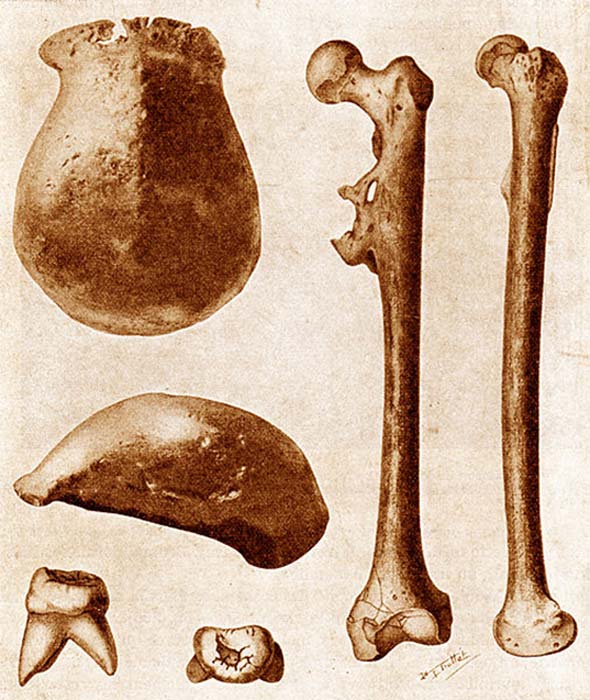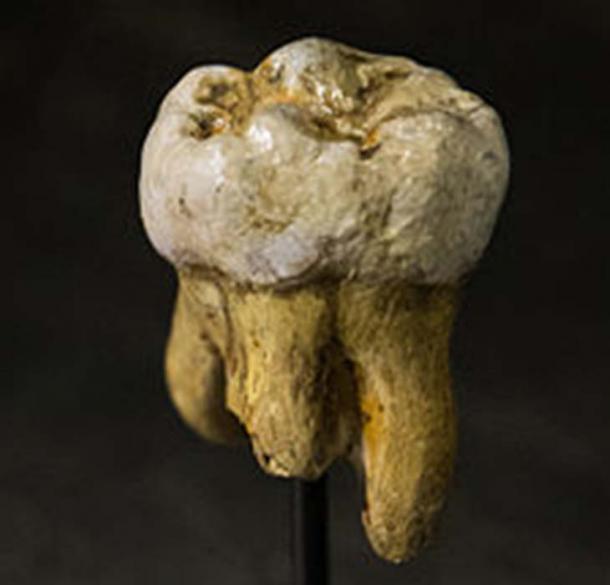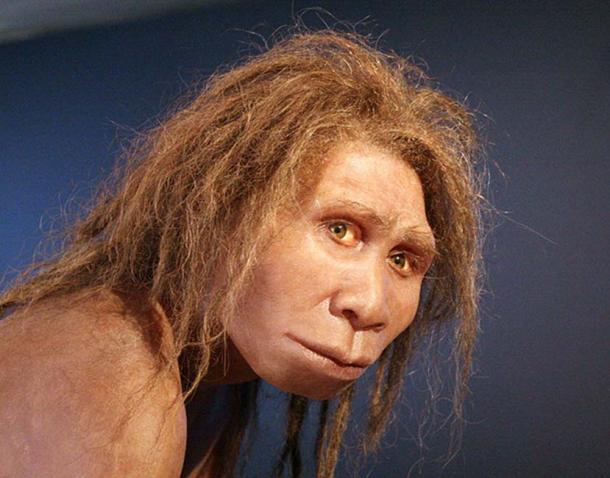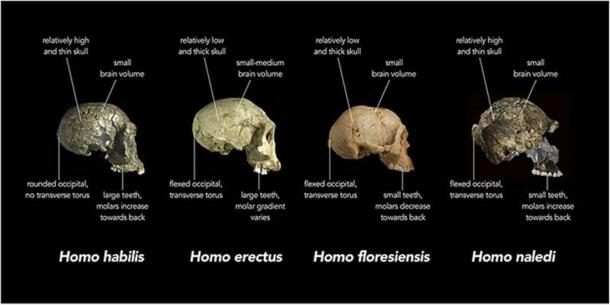11 Mysterious Human Species That Most People Don’t Know Existed
Since the publication of Darwin’s On Origin of the Species in 1859 there has been great interest in piecing together our family tree. Fossil hominids like Lucy the Australopithecus and Java Man have helped us to fill in some of the blanks, but as more and more remains of extinct human species have been discovered it has become clear that the history of our ancestors and how they evolved is not as simple as may once have been thought. Our family tree is now filled with not only direct ancestors like Homo Habilis and Homo Erectus but also cousins and distant relatives like Homo Neanderthalensis and Homo Denisova .
But despite so many extinct human species now being known, there are still gaps in the picture. And even though we have remains and evidence of some species, we know very little about them.
Homo Heidelbergensis
Homo Heidelbergensis – Heidelberg man. This extinct human ancestor walked the earth about 600,000 years ago in Africa, parts of Asia, and Europe. They are believed to be the direct ancestor of Neanderthals, and some archaeologists even argue that they are “archaic” or “early” Neanderthals. Heidelberg man was exceptionally tall at an average height of 6’, but also intelligent. They were using stone tipped spears made from obsidian to hunt and butcher large prey and may be the first species of homo to intentionally bury their dead.
- Scientists from Atapuerca Revolutionizing Human Evolution
- Pleistocene Epoch: Humans, Welcome to Earth
- Teeth vs. tools: Neanderthals and Homo sapiens had different dietary strategies

Heidelberg man – facial reconstruction based on the Kabwe skull displayed at the Smithsonian Museum of Natural History. (Tim1965 / CC BY-SA 2.0 )
Homo Rudolfensis
This extinct human ancestor is only known through a small number of fossilized bone fragments. There has been some debate as to whether Rudolfensis is the earliest known member of the homo genus, or if it is a very late member of the Australopethicus genus.
Due to the scant nature of the remains not much is known about the species, but evidence suggests its brain was proportionally larger than the other earliest members of the homo genus.
Java Man
In the early 1890s, the tooth, skullcap, and thighbone of an extinct human species were found by a team of archaeologists in East Java. This is what gave the discovery its nickname ‘Java Man’.
It was a big deal at the time, as the bones were at that point the oldest hominid remains ever discovered. It was originally argued by some archaeologists that Java Man was an ancestor of Homo Erectus , but there were some who said that it was the so called ‘missing link’ between ape and man.

The three main fossils of Java Man found in 1891–92: a skullcap, a molar, and a thighbone, each seen from two different angles. (120 / Public Domain )
Boskop Man
Boskop Man was discovered in 1913 in Boskop, South Africa. It is notable as the brain size of the skull was larger than that of a modern human. After other specimens of the species were discovered, it was given the name Homo Capensis. However, after heavy criticism in the 1950s there was a change of opinion and the Boskop Man along with the rest of Homo Capensis was reclassified as anatomically modern Homo Sapiens and not an extinct ancestor at all, despite an estimated head size of 30% larger than the modern average.
Homo Denisova
One of the more recent discoveries of an extinct human species was made at the Denisova Cave in Siberia as recently as 2008. Only a very few remains have been discovered so far, but thanks to advances in DNA analysis it has been possible to sequence the genome of Homo Denisova . With this evidence, it has been possible to show that some people in Tibet have snippets of Denisovan DNA in the same way that some Europeans have a tiny percentage of Neanderthal DNA.

Replica of a Denisovan molar, originally found in Denisova Cave. (Thilo Parg / CC BY-SA 3.0 )
Penghu Man
Another extinct human found in 2008 was Homo Tsaichangensis , which has the catchier nickname Penghu Man. Penghu Man’s fossilized mandible was discovered by fishermen working near the Penghu Islands off the coast of Taiwan. It is extremely thick and has gigantic teeth, which has puzzled scientists for several reasons. They have been able to determine it is the mandible of a previously unknown species and that it was probably very similar to Homo Erectus , but larger. It has so far not been possible to date the fossil, so they are not sure when the species was alive.
Dmanisi Man
Homo Georgicus , otherwise known as Dmanisi Man, is a species of extinct human which has been found in Dmanisi, Georgia. The species had a very small brain, unlike many of our extinct ancestors. The five skulls which are evidence of Homo Georgicus were discovered in 1991, and since then they have been the subject of much debate. They may be an intermediary between Homo Erectus and Homo Habilis , but there are some scientists who think the skulls are simply examples of Homo Erectus. Despite having a small brain, the fossils are associated with a total of 73 tools which proves a large brain is not always necessary to use and produce tools.

Homo Georgicus. (120 / CC BY-SA 3.0 )
Red Deer Cave People
The most recent known archaic human to go extinct, the remains of the Red Deer Cave People have been dated to approximately 11,500 years ago, meaning they were still around for about 28,500 years after the last pure Neanderthals.
Some scientists think the Red Deer Cave People were a hybrid of Homo Denisova and modern humans but attempts to sequence their DNA have not proved successful, so it is currently impossible to say for sure.
Homo Naledi
Evidence of Homo Naledi was unearthed in 2013 in a cave in South Africa by cavers who were able to access a chamber in the Rising Star system for the first time. Thirty meters (98 feet) below the surface, it is strewn with thousands of bones which have unique and interesting features with 1550 currently excavated and many more remaining in the cave. Some of their features are archaic and resemble specimens from around 20,00,000 years ago, but they also have more modern hominid features, and their bones have been dated to about 250,000 years ago. It has been concluded that they were not a direct ancestor of modern humans.
Archaeologists are unsure how so many bones ended up in the cave, but they may have been deliberately depositing the bodies there at the time of death as there is evidence that they were not all deposited at one time.
The Hobbit
In 2004 researchers made the announcement that a discovery had been made on the island of Flores, Indonesia. The people on the island had long talked of the Ebu Gogo, a supposed race of short, hairy men who lived in caves. Astonishingly, the discovery of stone tools and remains of a small hominid in a cave on the island seemed to prove the legends right. The remains were given the official name Homo Floresiensis after the island, but they have become known as The Hobbit . Homo Floresiensis was approximately 3.5’ tall, with large feet.
The Hobbit had very primitive features and a small brain, like our earliest Australopithecine ancestors, but they were able to use tools and may also have been able to hunt and use fire .

Comparison of skull features of Homo naledi and other early human species. (Animalparty / CC BY-SA 4.0 )
The Ghost Ancestor
A study published in 2019 has shared evidence of a yet undiscovered extinct human ancestor, proposed after an AI program determined that there was a ‘ghost’ population of archaic human which interbred with modern humans in the distant past. Researchers think the unknown ancestor may have been an offshoot of Homo Denisova, based on the evidence.
With new techniques such as this and advances in fields such as DNA analysis , it is now possible to learn more about extinct species of human than ever before. New species are being discovered and identified with relative frequency, and the earliest discoveries can now be reassessed and analyzed in greater detail. The evidence is pointing not to one unbroken chain of human ancestors , but a rich family tree with a number of offshoots. Exactly how many extinct relatives we have will probably never be known for sure, but with each discovery we are able to add a new and unique piece to the puzzle of who we are .
Related Post
The entire tomb is filled with signs and symbols that mention Queen Nefertiti and after some time passed and linguistic experts managed to decipher the stories told here, the team was baffled.
The mystery of the Solar Temple of Abu Gurab and its “Star Gate” comes to light
Thuya, the mother of Queen Tiye, left a monumental legacy by becoming the grandmother of Akhenaten and Tutankhamun.
The oldest traditions lead us to believe that blacks were the first inhabitants of Mexico.
The REAL face of King Tut: The pharaoh had feminine hips, clubfoot, and protruding teeth according to the ‘virtual autopsy,’ which also revealed that his parents were brother and sister.
The “oldest gold of humanity” was found in the Varna necropolis, on the Bulgarian Black Sea coast